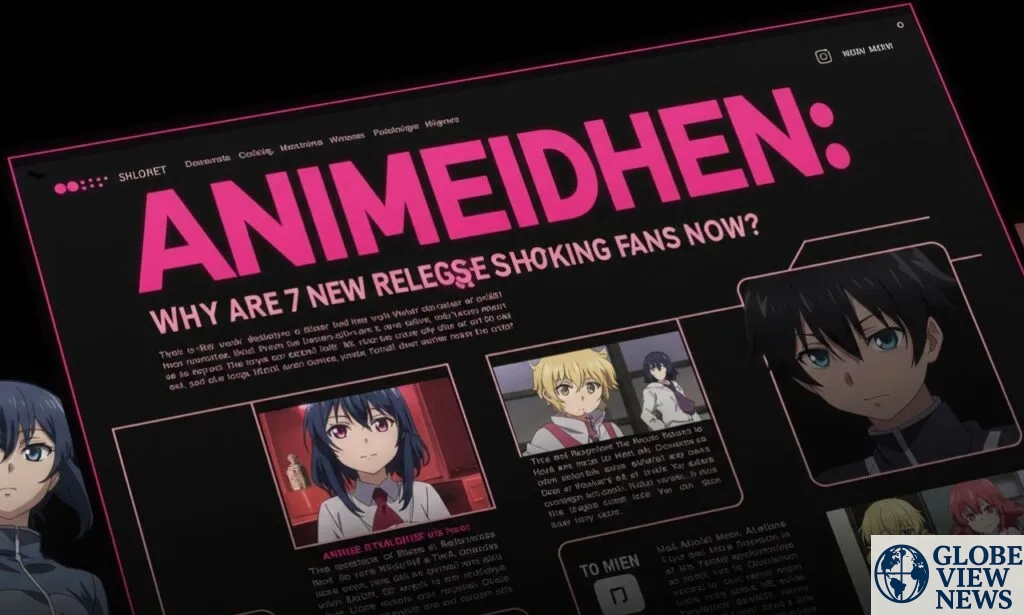In the ever-evolving world of animated storytelling, Animeidhen has emerged as a powerful name that redefines the expectations of anime fans across the globe. A unique blend of traditional anime aesthetics with experimental narrative elements, animeidhen has sparked curiosity and admiration from both seasoned fans and new viewers. But what exactly is animeidhen? Is it a movement, a studio, a franchise, or a genre in itself? In this exploration, we unfold the layers that contribute to the phenomena of animeidhen, while examining its themes, audience engagement, and cultural significance in contemporary media.
The anime industry, long dominated by household names like Studio Ghibli, Toei Animation, and MAPPA, has seen a renaissance in the 2020s with the emergence of independent creators and experimental platforms. Among them, animeidhen stands out for its mysterious origin and the way it challenges the norms of storytelling. Unlike most series which follow well-established tropes of shonen, shojo, or isekai genres, animeidhen delivers fragmented timelines, nonlinear plots, and ambiguous character alignments, giving viewers a more cerebral experience.
Not much is publicly documented about the initial creators or production studio behind animeidhen, adding to its mystique. Fans on forums like Reddit and MyAnimeList often speculate that it was originally a web project—possibly a visual novel or an experimental film—before gaining traction as a series. What’s undeniable is the community’s growing interest in its deep themes and stylistic choices.
At the heart of animeidhen’s appeal is its intricate world-building. The series doesn’t rely on lavish animation or flashy battles. Instead, it creates a layered visual landscape where surrealism and minimalism coexist. Each scene seems painted with a symbolic purpose, often using recurring motifs like shattered mirrors, decaying architecture, and shifting skies to reflect internal conflicts. The use of color is restrained yet meaningful, often dictating emotional tone over realism.
Character designs in animedhen also deviate from standard norms. Instead of perfectly proportioned, wide-eyed protagonists, the characters appear intentionally flawed—sometimes even grotesque. Their asymmetry serves a narrative purpose, reflecting emotional trauma, societal detachment, and identity disorientation. These subtle choices force the viewer to look beyond surface-level aesthetics and engage with the deeper psychological message.
The storytelling in animedhen can be likened more to literary fiction than typical anime formats. Episodes are presented out of order, interwoven with parallel timelines and symbolic dreamscapes. It’s a series that refuses to spoon-feed its viewers, demanding active interpretation and theorization. Viewers are often left to piece together fragmented scenes to form an emotional understanding rather than a linear plot.
Central themes in animedhen include existentialism, the illusion of memory, collective consciousness, and the conflict between technological determinism and human emotion. These abstract concepts are woven through minimalistic dialogue and eerie silence, letting viewers sit in the discomfort of ambiguity.
While some may find this disjointed narrative confusing, it has become a defining trait for those who appreciate interpretive media. Each re-watch of animedhen unveils new symbols or connections missed previously, making it a rewarding experience for analytical minds.
What solidifies the impact of animedhen is its cult-like fandom. Unlike mainstream anime communities focused on character popularity or power rankings, the animedhen community leans heavily into philosophical discussions, symbolism interpretation, and fan-made timelines. Websites and wikis dedicated solely to animedhen dissect every frame with scholarly rigor.
There’s even a popular subreddit with over 100,000 followers where fans debate over whether certain scenes are dreams or memories, and whether the central character, referred to only as “Idhen,” is a real person or a psychological projection. The community thrives on analysis, and theories are taken seriously. The creators—who remain anonymous—seem to encourage this by leaving breadcrumbs in visual clues and hidden messages in the credits.
It’s this active engagement that has turned animedhen into more than just a show—it’s a participatory narrative experiment.
One cannot ignore how animedhen has influenced other media. Several independent games, particularly in the visual novel and psychological horror genre, cite animedhen as an inspiration. Elements like “memory loops,” “non-player autonomy,” and “aesthetic of disintegration” have been directly lifted from the show’s framework.
Similarly, indie artists and animators on platforms like YouTube and Vimeo have created tribute pieces, music videos, and experimental shorts borrowing heavily from animeidhen’s visual language. In particular, the lo-fi music community has embraced its audio palette—eerie chimes, ambient drones, and glitched audio samples are often heard in fan-made playlists titled “Inspired by animedhen.”
It is also worth mentioning that some college-level film studies courses have begun including animedhen as part of their syllabus for studying nonlinear storytelling in animation. While it remains relatively underground, the academic appreciation is slowly gaining ground.
As with any piece of art that pushes boundaries, animedhen has received mixed critical feedback. On one hand, it has been lauded for its innovative approach and emotional resonance. Critics have called it a “mind-bending meditation on modern identity” and “a rare triumph of visual minimalism and philosophical ambition.”
On the other hand, detractors argue that its abstraction borders on incoherence. Some have labeled it as pretentious or needlessly complex, arguing that without fan communities to guide interpretation, the average viewer would feel lost. And indeed, animedhen is not accessible in the conventional sense. There are no recaps, no exposition dumps, and no straightforward character arcs.
Despite this, the show seems designed to embrace that very polarization. It isn’t interested in pleasing everyone, and that artistic defiance is part of its charm.
Perhaps the most unique quality of animedhen is how it affects its viewers psychologically. Unlike traditional entertainment, which offers closure and catharsis, animedhen leaves viewers in a suspended state of reflection. Episodes often end with a question or a metaphor rather than a resolution, prompting introspection rather than satisfaction.
Some viewers report feeling emotionally drained after episodes, not because of violence or drama, but due to the heavy themes and unresolved tensions. This kind of emotional engagement is rare in visual media and speaks to the psychological precision of its creators.
Many fans relate to animedhen on a deeply personal level, finding comfort in its depiction of fragmented identity and emotional ambiguity. It validates feelings of disconnection and encourages philosophical thought, making it more than just a series—it becomes a mirror for the subconscious.
Looking forward, the question remains: What is next for animeidhen? With the show’s creators remaining intentionally vague and little marketing or official news on future seasons, fans are left in anticipation. Some believe animeidhen is complete as it is—a finished artwork meant to be interpreted endlessly. Others hope for a continuation, or perhaps a new project under the same aesthetic umbrella.
In a media landscape saturated with repetitive stories and formulaic characters, animeidhen offers something rare: authenticity. It trusts its audience to think deeply, to engage, and to seek meaning beyond surface-level entertainment. For those willing to step into its abstract labyrinth, animeidhen provides a transformative viewing experience.
Whether it evolves or remains a singular artistic statement, animeidhen has already secured its place as a touchstone of experimental animation. It represents the capacity of anime to be not just entertaining, but intellectually and emotionally profound.

